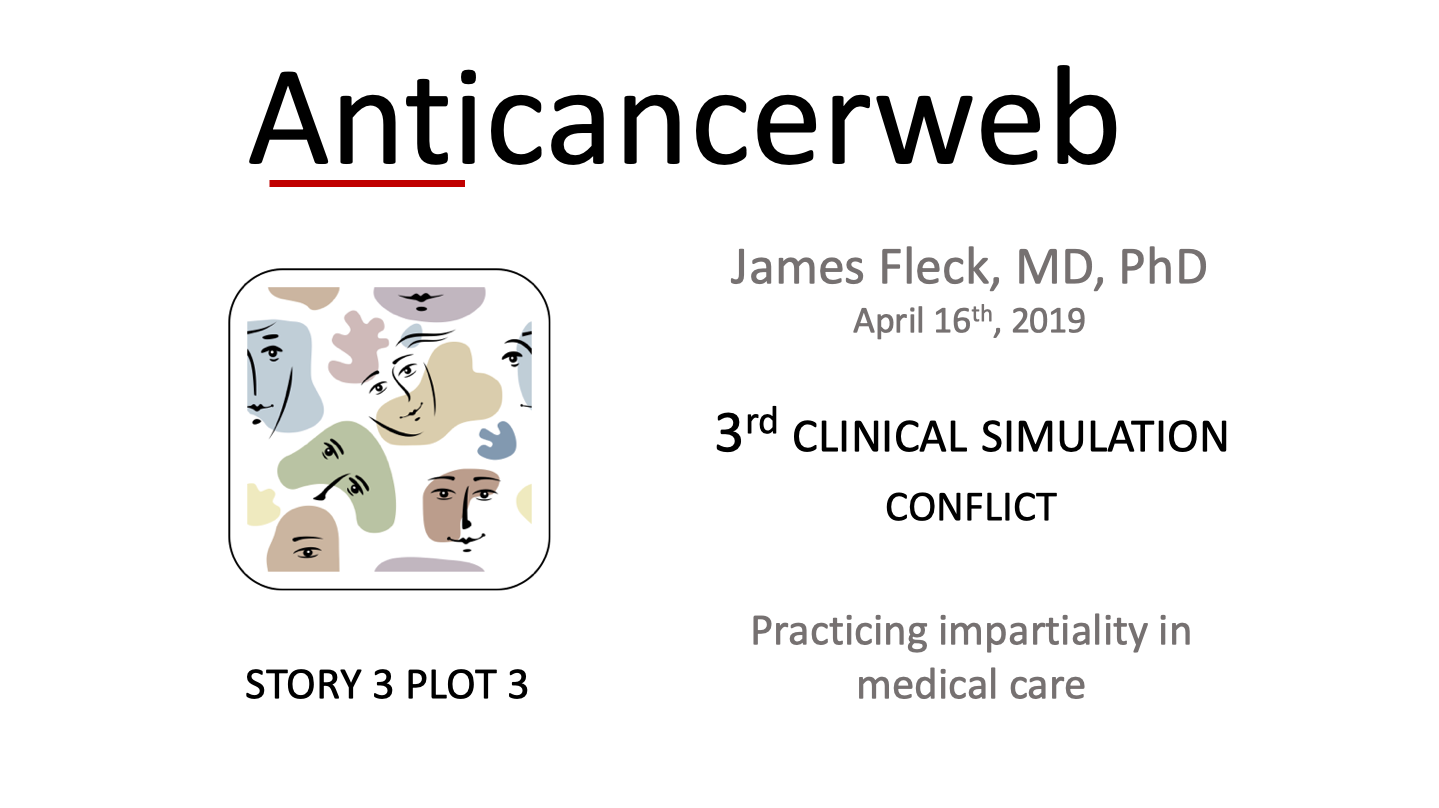
The Hippocratic Oath | Conflict
Ethical decision-making
(Fictional narrative by the doctor)
James Fleck, MD, PhD & João A de Andrade
Anticancerweb 16 (04), 2019
Although limited in his ability to express himself due to Tourette’s, Edgar was obviously able to understand and process information. He needed some extra time, but his thought process was clear and he was largely able to convey his ideas and concerns.
He could describe in detail the intensity, location, and duration of his pain. He had been living with pain for some months now, and he knew all the movements and positions that aggravated it.
I listened carefully to his story.
He described a continuous pain of high intensity (“10 out of a 10” in the numerical scale used to grade pain). The pain was located in his right shoulder, and went down to the arm and hand on the same side. It was particularly intense in the fourth and fifth fingers. He described it as a burning sensation that never stopped and prevented him from sleeping.
From the anatomical point of view, his description was consistent with a neuropathic pain in the distribution of the ulnar nerve. This symptom, combined with the findings in the chest X-ray made me believe that he had a Pancoast tumor.
Pancoast tumor is a unique and unusual clinical presentation of lung cancer. Diagnosis is often delayed and it accounts for less than 5% of all lung cancer cases. It is also called “superior sulcus tumor”, since it is located in the apical pulmonary groove. Pain is related to invasion of the bundle of nerves called the Brachial plexus by the tumor. Sometimes, vertebral bodies are also invaded, especially C8 and T1. Due to this location, respiratory symptoms are rare and late, hence the frequent delay in diagnosis.
As I examined Edgar, I noticed that the wound from his recent brain surgery was well healed and he had no obvious neurological deficits. The spasmodic facial movements were caused by Tourette's syndrome.
Tourette’s is an autosomal dominant genetic condition with erratic penetration, meaning that not all the people who inherits the gene, will have the disease. Although it had been described more than a century ago, it is still a poorly understood and under-diagnosed disease. The manifestations used to be attributed to anxiety, attention deficit hyperactive disorder or even obsessive-compulsive disorder. It is related to a disruption in brain neurotransmitters, specially histamine and its H3-receptor. Environmental factors may also exacerbate the disease’s signs and symptoms. Additionally, Edgar had “coprolalia”, a language disorder associated with Tourette's syndrome, in which one involuntarily blurts out of context obscene words, which was a great cause of stress and social inadequacy for him.
The other aspects of Edgar's physical exam were normal.
I shared with impression with him as soon as we were finished. I told him that there was a tumor on the right side of the chest. It was a rare type of lung cancer. It had been detected by an X-ray and the probable cause of the pain was invasion of the nerves by the tumor. I mentioned that we would do a chest CT scan that would not only improve our understanding of the location of the tumor, but would also guide a biopsy. I also explained that he had Tourette's syndrome and that in parallel we would look for treatment options that, hopefully, could alleviate his neurological and behavioral issues.
I noticed that Peter was closer to Edgar's bed.
When I was about to wrap up the consultation, Peter stepped forward and introduced himself to Edgar. He said that he was an Oncology Fellow and that he would be part of his care team.
As we left the room, Peter seemed relieved.
He then told me that he was no longer ambivalent about taking care of Edgar. He was not the person that kidnapped his brother and it was clear that he had spent all his life being stigmatized because of his neurological disease. He felt that Edgar had been a victim of what he thought as an unacceptable social prejudice. His crime could not be justified but getting to hear his story made him doubt Edgar’s intention to kill.
Before Peter could go on, I interrupted him. I explained that we were not there to make a moral judgment. Good or bad, Edgar had already been judged and found guilty under the law. From a medical perspective, he was no different than any other patient. He was severely ill, he was suffering, and our mission was to take care of him.
A patient’s race, religion, sexual orientation, political inclination, economic or social standing and even the patient's morals should not interfere with the care provided by a physician. Our job is to heal when possible and relieve suffering always. We should restrict our judgement to technical issues alone.
To be continued in PLOT 4…
Attention: The story 3 will be published sequentially from PLOT 1 to PLOT 6 and you will always see the most recent posting. To read Story 3 from the beginning, just click in the numbered links located at the bottom of the homepage.
© Copyright 2019 Anticancerweb
James Fleck, MD, PhD: Full Professor of Clinical Oncology at the Federal University of Rio Grande do Sul, RS, Brazil 2019 (Editor)
Joao A. de Andrade, MD: Professor of Medicine and Chief Medical Officer, Vanderbilt Lung Institute, Vanderbilt University Medical Center, Nashville, TN – USA 2019 (Associate Editor)

Please login to write your comment.
If you do not have an account at Anticancerweb Portal, register now.